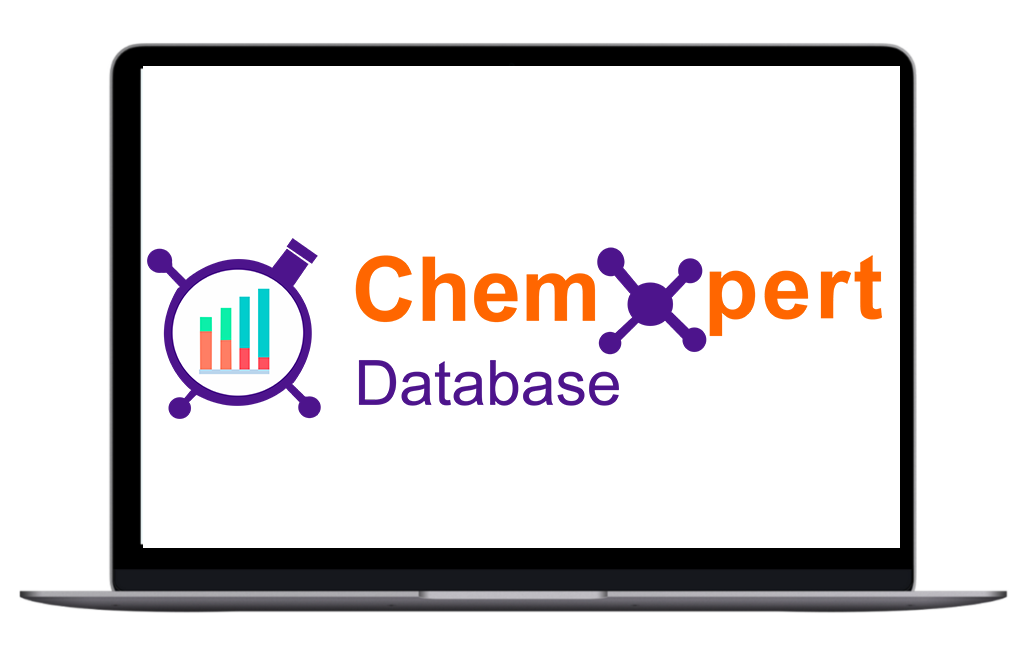No notifications yet

US FDA approves Xolair as first and only medicine for children and adults with one or more food allergies
Roche announced that the US Food and Drug Administration (FDA) has approved Xolair (omalizumab) for the reduction of allergic reactions, including anaphylaxis, that may occur with accidental exposure to one or more foods in adult and paediatric patients aged 1 year and older with IgE-mediated food allergy. People taking Xolair for food allergies should continue to avoid all foods they are allergic to (commonly referred to as “food allergen avoidance”). Xolair should not be used for the emergency treatment of any allergic reactions, including anaphylaxis. Immunoglobulin E (IgE)-mediated food allergies are the most common type and are typically characterised by the rapid onset of symptoms following exposure to certain food allergens. Xolair is the first and only FDA-approved medicine to reduce allergic reactions in people with one or more food allergies. Xolair is widely available and can now be prescribed for appropriate patients with IgE-mediated food allergy in the US.
Xolair offers patients and families an important new treatment option that can help redefine the way food allergies are managed and reduce the often-serious allergic reactions that can result from exposure to food allergens,” said Levi Garraway, M.D., Ph.D., Roche's chief medical officer and head of global product development. “Today’s approval builds on 20 years of patient experience and an established efficacy and safety profile since Xolair was first approved in allergic asthma. We look forward to bringing this treatment to the food allergy community who have long awaited an advancement.
• The FDA approval is based on positive data from the phase III OUtMATCH study, which evaluated Xolair in patients aged 1 to 55 years allergic to peanuts and at least two other food allergens, including milk, egg, wheat, cashew, hazelnut and walnut.
• The OUtMATCH study is sponsored and funded by the National Institute of Allergy and Infectious Diseases (NIAID), part of the National Institutes of Health (NIH), and is being conducted by the NIAID-funded Consortium for Food Allergy Research (CoFAR) at 10 clinical sites across the US led by Johns Hopkins Children's Center and co-led by Stanford School of Medicine.
• Detailed results from the study will be featured in a late-breaking symposium at the 2024 American Academy of Allergy, Asthma & Immunology (AAAAI) Annual Meeting on Sunday, 25 February.
As more and more people are affected by food allergies, the need for a new approach to help prevent serious and often life-threatening allergic reactions and emergencies is critical,” said Sung Poblete, R.N., Ph.D., CEO of FARE (Food Allergy Research and Education). “As someone with food allergies, I know firsthand the significant impact they can have on people and their loved ones, and I share in the community’s excitement for this approval."
“The stress of living with food allergies can weigh heavily on people and their families, particularly when navigating events like children's birthday parties, school lunches, and holiday dinners with friends and family,” said Kenneth Mendez, president and CEO of the Asthma and Allergy Foundation of America (AAFA). “Given the growing prevalence of food allergies, this news offers hope to the many children and adults who may benefit from a new way to help manage their food allergies.”
• Patients entered the OUtMATCH study unable to tolerate up to 100 mg of peanut protein (equivalent to about one third of a peanut), and up to 300 mg each of milk, egg and cashew protein.
• After 16 to 20 weeks of treatment with Xolair or placebo, each participant completed four food challenges, receiving gradually increasing amounts of foods they are allergic to (and a placebo ingredient), in order to assess their ability to consume a single dose of at least 600 mg of peanut protein (primary endpoint), and a single dose of at least 1,000 mg of milk, egg or cashew protein (secondary endpoints) without experiencing moderate to severe allergic symptoms.
• Study results showed a statistically significant higher proportion of patients (68%) treated with Xolair for 16 to 20 weeks tolerated at least 600 mg of peanut protein without moderate to severe allergic symptoms, compared to 5% of those treated with placebo (p<0.0001).
• This amount is equivalent to approximately two and a half peanuts or half a teaspoon of regular peanut butter.
• In addition, a statistically significant higher proportion of patients treated with Xolair compared to placebo tolerated at least 1,000 mg of protein from milk (66% vs. 11%; p<0.0001), egg (67% vs. 0%; p<0.0001) or cashew (42% vs. 3%; p<0.0001) without moderate to severe allergic symptoms.
• This amount is equivalent to approximately two tablespoons of 1% milk, one-quarter of an egg or three and a half cashews.
• While patients in the study tolerated these amounts of food, treatment with Xolair should be used with continued food allergen avoidance.
• Safety findings were consistent with the known safety profile of Xolair across its additional indications and in previous clinical trials.
• The most common adverse events (=3% of patients) in Xolair-treated patients in the study were injection site reaction (15.5% vs. 10.9% with placebo) and fever (6.4% vs. 3.6% with placebo).
• About 3.4 million children and 13.6 million adults in the US have been diagnosed with IgE-mediated food allergies, based on estimates for 2024.
• Food allergy prevalence has been on the rise for the past 20 years. There are 160 different foods that cause IgE-mediated food allergy.
• Allergic reactions can range from mild to moderate, including hives and swelling, to severe and life-threatening, such as anaphylaxis.
• More than 40% of children and more than half of adults with food allergies have experienced a severe reaction at least once, and it is estimated that food-related anaphylaxis results in 30,000 medical events treated in emergency rooms in the US each year.
This marks the fourth FDA-approved indication for Xolair across allergic and inflammatory conditions, including moderate to severe persistent allergic asthma, chronic spontaneous urticaria (CSU) and chronic rhinosinusitis with nasal polyps (CRSwNP). Since its initial approval in 2003, more than 700,000 patients have been treated with Xolair in the US.
• Xolair is a prescription biologic medicine that is given as an injection under the skin (subcutaneous). It is the only FDA-approved antibody designed to target and block IgE — an underlying driver of food allergy reactions.
• The recommended Xolair dosage for treatment of food allergy is 75 mg to 600 mg once every 2 or 4 weeks.
• Xolair dose and dosing frequency is determined by total serum IgE level and body weight.
• Injections can be given by a healthcare provider in a healthcare setting or at home through self-injection after initiating in a healthcare setting.
• Healthcare providers will determine appropriate candidates for self-injection.
In the US, Genentech, a member of the Roche Group, and Novartis Pharmaceuticals Corporation work together to develop and co-promote Xolair.
The Omalizumab as Monotherapy and as Adjunct Therapy to Multi-Allergen Oral Immunotherapy in Food Allergic Children and Adults (OUtMATCH; NCT03881696) study is a three-stage, multicentre, randomised, double-blind, placebo-controlled study evaluating Xolair safety and efficacy in patients aged 1 to 55 years who are allergic to peanuts and at least two other food allergens.
• Stage 1 patients were randomised to receive placebo or Xolair injections either every two weeks or every four weeks for 16 to 20 weeks.
• The Xolair dose and dosing interval were determined by total serum immunoglobulin E (IgE) level and body weight at baseline.
• After 16 to 20 weeks of treatment with Xolair or placebo, each participant completed four separate blinded food challenges where they were given gradually increasing amounts of peanut protein, two other food proteins they were allergic to, and a placebo ingredient.
• The food challenges were conducted in a carefully controlled setting with investigators looking for signs and symptoms of allergic reaction to assess patients’ ability to consume a single dose of at least 600 mg of peanut protein (primary endpoint), and a single dose of at least 1,000 mg of milk, egg, wheat, cashew, hazelnut or walnut protein (secondary endpoints) without experiencing dose-limiting symptoms, which were defined as moderate to severe allergic symptoms, including skin, respiratory or gastrointestinal symptoms.
The OUtMATCH study is sponsored and funded by the National Institute of Allergy and Infectious Diseases (NIAID), part of the NIH, and is being conducted by the NIAID-funded Consortium for Food Allergy Research (CoFAR) at 10 clinical sites across the US led by Johns Hopkins Children's Center and co-led by Stanford School of Medicine. The study is also supported by Genentech and Novartis Pharmaceuticals Corporation.
Xolair is the only approved antibody designed to target and block immunoglobulin E (IgE). By reducing free IgE, down-regulating high-affinity IgE receptors and limiting mast cell degranulation, Xolair minimises the release of mediators throughout the allergic inflammatory cascade.
The Roche Group’s immunology medicines include: Actemra/RoActemra?(tocilizumab) for rheumatoid arthritis, polyarticular juvenile idiopathic arthritis (pJIA), systemic juvenile idiopathic arthritis (sJIA) and giant cell arteritis (GCA) and for the treatment of severe or life-threatening chimeric antigen receptor (CAR) T cell-induced cytokine release syndrome (CRS); Rituxan/MabThera?(rituximab) for rheumatoid arthritis granulomatosis with polyangiitis and microscopic polyangiitis and for pemphigus vulgaris (PV); Xolair?(omalizumab) for allergic asthma and chronic idiopathic urticaria (CIU); Pulmozyme?(dornase?alfa) for cystic fibrosis; and Esbriet?(pirfenidone) for idiopathic pulmonary fibrosis (IPF).
Roche has more than 15 investigational medicines in clinical development for immunological diseases that include asthma, autoimmune diseases, rheumatoid arthritis, ulcerative colitis and Crohn's disease.

Sick and tired of always wondering if you are being asked to pay the right price for your APIs? This empowers you with the answers you need to make the right decisions in the Global API market.
Chemxpert Database is one of the biggest and most comprehensive directories of pharma and chemicals, manufacturers, suppliers and information. Provided with current information on prices, demand and transactions, it gives you instant feedback on whether you are buying what is right and at the right time.
Start using market intelligence today and allow yourself to be in control in the API market.
Check it out today and make more informed sourcing decisions! Learn More!
